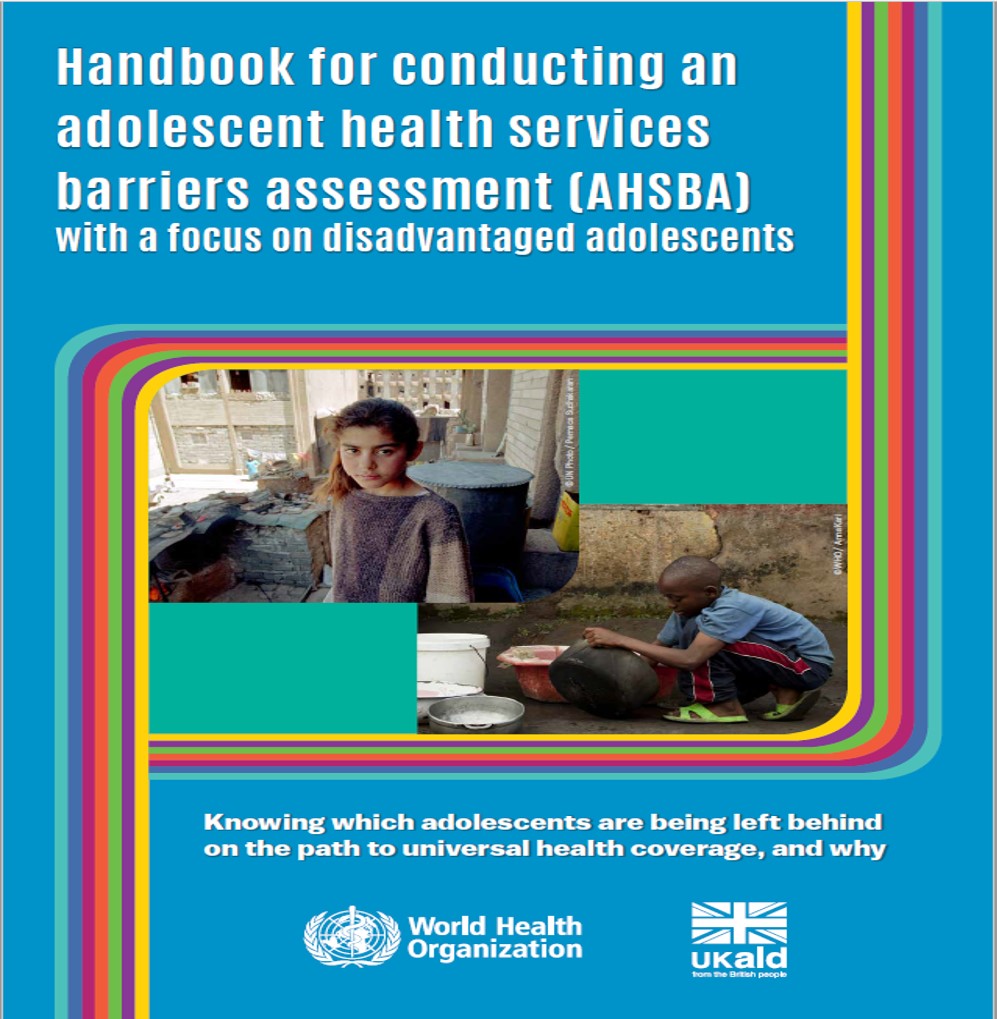Handbook for conducting an adolescent health services barriers assessment (AHSBA) with a focus on disadvantaged adolescents

Source: https://apps.who.int/iris/bitstream/handle/10665/310990/9789241515078-eng.pdf?ua=1
Overview
A first step towards achieving universal health coverage for adolescents is for each country to assess which adolescent subpopulations do not have effective health service coverage and what the most important barriers are that prevent them from having it. This handbook for conducting an adolescent health services barriers assessment (AHSBA) with a focus on disadvantaged adolescents outlines how governments can assess health service equity and barriers at national and subnational levels in order to identify which adolescents are being left behind, and why. The handbook’s three objectives are:
- To build in-country capacity to identify barriers which prevent disadvantaged adolescents from having effective coverage with health services;
- To trigger remedial action to address the barriers in order to promote high levels of programme performance and more equitable health outcomes among adolescents;
- To catalyze integration of a focus on who is being left behind and why into ongoing country-level monitoring and evaluation (M&E) of health services for adolescents.
This handbook is an example of how WHO is operationalizing its “Triple Billion” targets towards Health For All by ensuring that the health of every adolescent is accounted for, even in the most disadvantaged or vulnerable situations. Identifying who is left behind and why is necessary to address and redress inequities. This work is fundamental to achieving universal health coverage (UHC), as well as the health-related targets of the Sustainable Development Goals.
- ISSUP members can join Networks to comment – Sign in or become a member